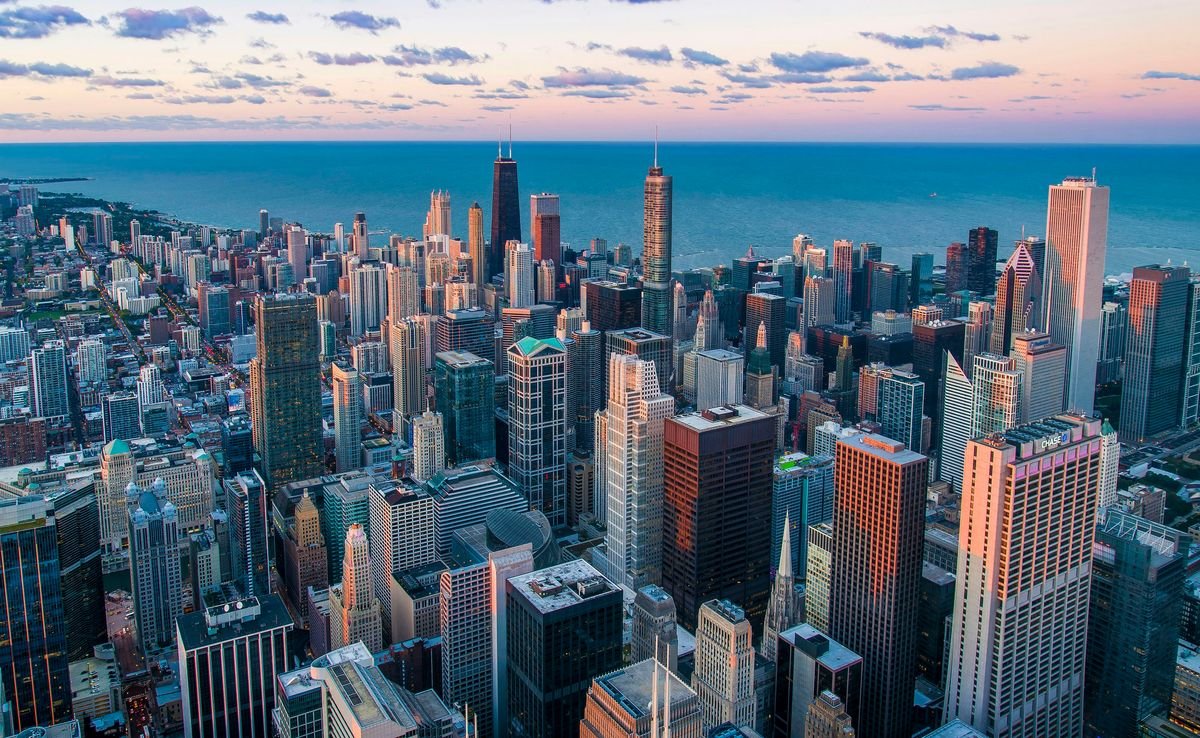Table of Contents
ToggleThe Vision of a Tourist Haven: Saudi Arabia’s Strategic Shift
From Oil to Tourism: Diversifying the Economy
In an ambitious pivot away from its traditional oil-based economy, Saudi Arabia is now placing a high-stakes wager on the tourism sector. The kingdom is channeling substantial resources into transforming its image and infrastructure to become a premier tourist destination. This strategic shift is not just about altering perceptions but also about creating a more diverse and resilient economic foundation.
The tourism industry in Saudi Arabia is poised to play a pivotal role in the nation’s economic diversification. With initiatives like the Red Sea Project and the futuristic city of Neom, the country is crafting unique travel experiences that aim to captivate a global audience. The goal is to reduce the reliance on oil revenues and foster a new economic pillar that can sustain the kingdom’s prosperity in the long term.
- Economic Diversification: Transitioning from oil dependency to a multifaceted economy.
- Investment in Tourism: Allocating funds to develop tourism infrastructure and attractions.
- Global Marketing: Promoting Saudi Arabia as a must-visit destination on the international stage.
- Cultural Showcase: Highlighting the rich heritage and modern advancements of Saudi society.
By 2030, Saudi Arabia aspires to welcome millions of visitors, a target that underscores the magnitude of its tourism ambitions. The success of this endeavor will not only redefine the country’s economic landscape but also its position in the global tourism market.
Neom and Red Sea Project: Pioneering a New Future
Saudi Arabia’s transformation into a top tourist destination is epitomized by the ambitious Neom and the Red Sea Project. These initiatives are cornerstones of the kingdom’s strategic shift, aiming to redefine luxury tourism and sustainable development. Neom represents an unprecedented leap into the future, with plans for a futuristic mega-city that integrates smart technologies and renewable energy, while the Red Sea Project focuses on eco-friendly luxury travel, promising an exclusive experience with minimal environmental impact.
The scale and scope of these projects are immense, with Neom alone projected to span over 26,500 square kilometers. Here’s a snapshot of what these projects entail:
- Neom: A smart city initiative with sectors focusing on energy, biotech, food, manufacturing, and entertainment.
- Red Sea Project: An archipelago of over 90 untouched islands being developed into luxury resorts, with a commitment to protecting the marine environment.
By setting such high targets, Saudi Arabia is not only diversifying its economy but also positioning itself as a leader in futuristic and sustainable tourism. The success of these projects could very well set a new benchmark for global tourism development.
The 2030 Target: Attracting Millions of Visitors
Saudi Arabia’s ambitious goal to attract millions of international visitors by 2030 is a cornerstone of its strategic shift towards tourism. This target is not just about increasing numbers; it’s a comprehensive vision that encompasses job creation, economic diversification, and the establishment of the kingdom as a premier travel destination.
To achieve this, the kingdom is not only developing mega-projects like Neom and the Red Sea Project but also enhancing its hospitality sector to cater to the expected influx of tourists. The focus is on creating a robust infrastructure that includes high-end retail and hospitality developments, ensuring that the country is well-equipped to host a diverse range of visitors.
The table below outlines the projected growth in visitor numbers and the corresponding job creation, highlighting the scale of Saudi Arabia’s tourism aspirations:
| Year | Expected Visitors (millions) | Projected Jobs Created |
|---|---|---|
| 2025 | 30 | 1 million |
| 2030 | 100 | 1.5 million |
As Saudi Arabia gears up to compete with established tourism hubs like the UAE, the stakes are high. The success of this venture will not only redefine the kingdom’s economy but also its position on the global stage.
Investing in Infrastructure: Building the Foundations for Tourism
Connectivity and Accessibility: Opening Up New Regions
Saudi Arabia’s strategic expansion into tourism is underscored by significant improvements in connectivity and accessibility, which are crucial for opening up new regions to visitors. The kingdom is not only enhancing established locations like metros but is also expanding into areas previously untapped by the hospitality industry. This move is akin to the transformation seen in Gulf countries, where aviation hubs with world-class tourism infrastructure have become models for development.
The hospitality sector is preparing to open its doors wider, with investments flowing in to support the growth of religious hotspots and other key destinations. For instance, mid-size and upscale hotel companies are firming up investments to the tune of Rs 3,500 crore, translating into over 5,000 new rooms and approximately 25,000 jobs. This expansion is indicative of the broader trend where the industry is poised for robust growth, with occupancy rates expected to reach decade highs and average room rates inching towards peak levels.
To further bolster this growth, the kingdom is looking at new business opportunities and strengthening regional offices. The integration of global standards through private investment, especially from foreign investors, is seen as crucial for elevating the tourism experience to meet international expectations.
High-End Retail and Hospitality Developments
Saudi Arabia’s commitment to transforming its economy is evident in the burgeoning hospitality sector, which is set to welcome a surge of visitors to religious and cultural hotspots. Investments in high-end retail and hospitality are projected to exceed SAR 13 billion (approximately $3.5 billion), creating over 5,000 new rooms and an estimated 25,000 jobs within the next two years.
The hospitality industry is not only expanding in established metropolitan areas but also branching into new regions, thanks to improved connectivity. This expansion is accompanied by a growing preference for experiential travel, which is reshaping the industry’s offerings. The trend towards branded residences and luxury accommodations caters to the lifestyle of the affluent, signaling a shift towards more diversified revenue streams.
Here’s a snapshot of the expected growth in the hospitality sector:
| Year | Projected Revenue Growth | New Rooms | Job Creation |
|---|---|---|---|
| FY25 | 11-13% | 5,000+ | 25,000+ |
This optimistic forecast is supported by the industry’s anticipated performance, with occupancy rates and average room rates approaching peak levels not seen in over a decade. The strategic focus on high-end developments is a clear indicator of Saudi Arabia’s ambition to redefine its position in the global tourism landscape.
Government Initiatives and International Events
The Saudi government is making significant strides in positioning the kingdom as a premier tourist destination. Bold initiatives and strategic partnerships are at the forefront of this transformation. The kingdom’s commitment to tourism is evident through its support for large-scale projects and hosting of international events that showcase its cultural heritage and modern advancements.
To illustrate the scale of government-led initiatives, consider the following key events and projects:
- The annual Riyadh Season festival, which draws visitors with its entertainment and cultural offerings.
- The Future Investment Initiative, a platform for discussing global economic trends that also highlights Saudi Arabia’s investment potential.
- The development of the King Salman Park, set to be one of the world’s largest city parks, enhancing the urban landscape and providing recreational spaces for tourists and residents alike.
These efforts are complemented by policies aimed at easing travel restrictions and enhancing visitor experiences, thereby reinforcing Saudi Arabia’s ambition to become a hub for international tourism by the year 2030.
Navigating Challenges: The High Stakes of Saudi’s Tourism Gamble
Economic Fluctuations and Oil Dependency
The kingdom’s pivot from oil to tourism is a strategic maneuver to mitigate the risks associated with economic fluctuations and the volatility of oil markets. In 2023, Saudi Aramco reported a significant 24.7 percent drop in profits, underscoring the urgency to diversify the economy. The extended voluntary oil cut of 1 million barrels per day until mid-2024 further highlights the nation’s commitment to reducing its oil dependency.
Despite these efforts, the country’s GDP contracted by 4.3% in the fourth quarter of the previous year, indicating the challenges ahead. The ambitious tourism projects, such as Neom and the Red Sea Project, are financed by the oil wealth, creating a paradoxical situation where the country uses its oil influence to fund its departure from oil reliance.
The success of Saudi Arabia’s tourism strategy will largely depend on its ability to navigate these economic headwinds while ensuring that the transition to a tourism-based economy does not compromise its financial stability.
Balancing Tradition with Modern Tourism Demands
Saudi Arabia’s ambitious tourism strategy necessitates a delicate balance between preserving its rich cultural heritage and meeting the evolving expectations of international travelers. The juxtaposition jarred, as the kingdom, known for its conservative values, adapts to a more open and diverse tourism market. This transition is not without its challenges, as societal norms and regulations, such as separate poolside hours for men and women, must be navigated carefully to avoid cultural clashes while still providing a welcoming environment for tourists.
To achieve this balance, Saudi Arabia is implementing a series of measures aimed at harmonizing tradition with modernity. These include curated cultural experiences that showcase the kingdom’s history and customs, alongside state-of-the-art facilities and services that cater to the needs of global visitors. The table below outlines some of the initiatives underway:
| Initiative | Description |
|---|---|
| Cultural Festivals | Celebrating Saudi heritage while inviting international participation. |
| Tourism Training Programs | Equipping locals with the skills to meet service standards expected by tourists. |
| Regulatory Reforms | Adjusting laws to be more tourist-friendly while respecting local customs. |
As Saudi Arabia continues to open its doors to the world, the success of its tourism industry will hinge on its ability to offer an authentic experience that respects its past while embracing the future.
Managing International Perceptions and Relations
Saudi Arabia’s ambitious tourism goals hinge not only on the development of world-class facilities but also on shaping the international narrative around its tourism sector. The kingdom’s efforts to increase the attractiveness of foreign tourists are pivotal to the success of Vision 2030. This involves not just marketing and promotion but also addressing deeper issues of perception and building relationships with global partners.
To this end, Saudi Arabia has been proactive in hosting international events and engaging in cross-border collaborations. These initiatives serve as a platform to showcase the nation’s commitment to becoming a major player in the global tourism industry. Moreover, they help in managing the delicate balance between preserving cultural heritage and meeting modern tourism demands.
The table below highlights the key areas of focus for Saudi Arabia in managing international perceptions and relations:
| Area of Focus | Description |
|---|---|
| Marketing & Promotion | Tailored campaigns to highlight tourism offerings. |
| Cultural Diplomacy | Leveraging heritage to foster global connections. |
| Strategic Partnerships | Collaborating with international tourism entities. |
| Regulatory Framework | Ensuring a tourist-friendly environment. |
As the kingdom navigates the complexities of international relations, it remains imperative to align its tourism strategy with global standards and expectations. The success of this high-risk bet will ultimately depend on how effectively Saudi Arabia can position itself as a welcoming and intriguing destination on the world stage.
The Ripple Effect: How Saudi’s Bet Impacts Global Tourism
Competition with Established Tourism Hubs
As Saudi Arabia ventures into the realm of global tourism, it faces the daunting task of competing with established tourism hubs. The Kingdom’s strategic investments aim to carve out a unique position in the international tourism landscape. With the World Bank choosing Saudi Arabia as a location for a new knowledge hub, the country is signaling its readiness to engage with global partners and enhance its competitive edge.
The tourism industry is not just about travel; it encompasses a broad ecosystem of niche players, from digital ticketing monopolies to airport lounge service providers. Saudi Arabia’s entry into this market could disrupt the status quo, challenging the dominance of traditional players. The hospitality industry’s expected revenue growth and the search for new business opportunities underscore the dynamic nature of this sector.
To truly compete, Saudi Arabia must focus on high-value customers and prioritize aspects such as cleanliness, connectivity, and sustainability. These efforts are crucial for not just attracting tourists but also for fostering job creation and economic development within the Kingdom.
Potential for Job Creation and Economic Growth
Saudi Arabia’s ambitious tourism projects are not just about attracting visitors; they represent a transformative economic opportunity. The kingdom’s $1 trillion investment in tourism is projected to create millions of jobs, diversifying the economy beyond its traditional oil base. This influx of employment opportunities is expected to span various sectors, including hospitality, construction, and retail.
The job market is poised to benefit from this strategic shift, with new roles emerging in areas such as infrastructure development and service industries. For instance, the hospitality and travel industries in regions with religious and cultural significance are already seeing job creation, as evidenced by the surge in employment in Ayodhya’s hospitality sector.
| Sector | Expected Job Growth |
|---|---|
| Hospitality & Tourism | Significant Increase |
| Infrastructure | Notable Expansion |
| Retail | Steady Rise |
The economic ripple effect of this initiative is substantial, with the potential to elevate Saudi Arabia’s position on the global stage as a competitive tourism hub. The success of this venture could also inspire similar investments in the region, further stimulating job creation and economic development.
Influence on Regional Tourism Dynamics
Saudi Arabia’s ambitious tourism strategy is poised to reshape the regional tourism landscape. The kingdom’s investment is not just a domestic affair but a regional game-changer, potentially redirecting the flow of tourists and investments across the Middle East. As Saudi Arabia aims to emulate the success of the UAE, attracting wealthy visitors and investors, including Russians as noted by Sivaev, the dynamics of regional tourism are set to shift.
The ripple effects of Saudi’s tourism initiatives could be profound. Neighboring countries may find themselves competing for a share of the lucrative tourism market. This competition could spur a wave of innovation and improvement in services and infrastructure, as each nation strives to offer a unique and compelling travel experience. The table below illustrates the potential impact on key regional players:
| Country | Current Tourism Rank | Potential Impact |
|---|---|---|
| UAE | High | Increased competition |
| Qatar | Moderate | Growth in luxury tourism |
| Egypt | Established | Diversification of offerings |
| Jordan | Emerging | Enhanced cultural tourism |
In conclusion, Saudi Arabia’s vision for tourism extends beyond its borders, influencing the entire region’s approach to attracting international visitors. The success of this vision could lead to a new era of prosperity and cooperation, but it also carries the risk of upsetting the current balance in regional tourism.
Beyond the Headlines: The Realities of Saudi’s Tourism Aspirations
Addressing the Talent Crunch in Hospitality
The hospitality sector in Saudi Arabia faces a significant talent crunch as it expands to meet the ambitious tourism goals. This shortage is exacerbated by factors such as inadequate compensation and a work environment that fails to retain talent, leading to a high churn rate. The urgency to address this issue is echoed in the call to Elevate Saudi Arabia’s hospitality industry with comprehensive staff training.
To bridge the skill gap, the Tourism and Hospitality Skill Sector Council (THSC) has identified a need to train approximately 5.7 million youth. This training is aimed at fulfilling the incremental labor demand projected between 2025-2028. The THSC report underscores the importance of equipping the workforce with essential skills like problem-solving to enhance their employability and service quality.
In response to the talent shortage, travel firms and hotel chains are not only ramping up hiring but are also seeking to attract mid-senior talent with expertise in AI and automation. These efforts are complemented by competitive compensation packages, which are crucial in attracting and retaining the necessary talent to support the burgeoning tourism industry.
Sustainability and Environmental Concerns
As Saudi Arabia forges ahead with its ambitious tourism projects, sustainability and environmental concerns take center stage. The Kingdom’s commitment to sustainable development in the travel sector was recently reiterated by the Saudi tourism minister, signaling a recognition of the environmental impact that large-scale tourism can have.
In light of the World Meteorological Organization’s report naming Asia as the most disaster-prone region in 2023, with significant economic losses due to floods, storms, and heatwaves, the pressure is on to ensure that tourism development does not exacerbate these challenges. The integration of sustainable practices is not just a response to environmental threats but also a strategic move to attract high-value customers who prioritize eco-friendly travel options.
The Tourism and Hospitality Skill Sector Council’s report on the Demand And Skill Gap underscores the need for a workforce skilled in sustainability. Training programs focused on problem-solving and innovative strategies in sustainability are crucial for the sector’s growth and the successful implementation of eco-conscious tourism initiatives.
The Role of Digital Innovation in Travel Experiences
In the realm of tourism, digital innovation is a game-changer, enhancing the travel experience from planning to post-trip. Saudi Arabia, recognizing this, is investing in smart technologies to evolve into a sophisticated and tech-driven destination. The Kingdom’s surge in tourism, coupled with its strategic investments, positions it to lead the way in digital travel experiences.
Digital ticketing platforms, AI-driven personalization, and virtual reality tours are just a few examples of how technology is reshaping the industry. These innovations not only streamline the travel process but also enrich the visitor’s journey with unique and memorable experiences. Below is a list of key digital advancements shaping Saudi’s tourism sector:
- Digital ticketing and reservation systems
- Personalized travel recommendations powered by AI
- Virtual and augmented reality experiences
- Mobile apps for on-the-go itinerary management
As Saudi Arabia continues to expand its tourism offerings, the integration of digital solutions is crucial for meeting the modern traveler’s expectations. The Kingdom’s commitment to digital innovation is set to redefine the travel landscape, offering seamless and immersive experiences to its visitors.
Conclusion
Saudi Arabia’s audacious $1 trillion investment in its tourism sector is a bold move that reflects the kingdom’s determination to diversify its economy and reduce its reliance on oil revenues. This high-stakes strategy aims to position Saudi Arabia as a premier global destination, rivalling established tourism hubs. With mega-projects like Neom and the Red Sea Project, the country is poised to offer unique experiences that could attract millions of visitors. However, amidst fluctuating oil prices and economic uncertainties, this venture carries significant risks. Success will depend on the kingdom’s ability to execute these grand plans effectively while navigating the complex dynamics of the global travel industry. As the world watches, Saudi Arabia’s gamble on tourism could either become a transformative economic triumph or a cautionary tale of ambition and overreach.
Frequently Asked Questions
Why is Saudi Arabia investing $1 trillion in tourism?
Saudi Arabia is investing in tourism as part of its strategic shift to diversify its economy away from oil dependency. With projects like Neom and the Red Sea Project, the kingdom aims to become a top tourist destination and attract millions of visitors by 2030.
What are some of the key projects in Saudi Arabia's tourism plan?
Key projects include Neom, a futuristic city in the northwest, and the Red Sea Project, which aims to develop luxury tourism along the Red Sea coast. These projects are designed to enhance the kingdom's appeal as a global tourist destination.
How does Saudi Arabia plan to compete with established tourism hubs like the UAE?
Saudi Arabia plans to compete by investing in world-class infrastructure, hosting international events, and leveraging its unique cultural and historical heritage to offer a distinct tourism experience.
What are the economic implications of Saudi Arabia's tourism investment?
The investment in tourism is expected to create jobs, stimulate economic growth, and reduce the kingdom's reliance on oil revenues. It could also influence regional tourism dynamics and increase competition among neighboring countries.
How is Saudi Arabia addressing environmental concerns in its tourism development?
Saudi Arabia is incorporating sustainability into its tourism projects, with a focus on preserving natural habitats, promoting eco-friendly practices, and ensuring that development does not harm the environment.
What challenges does Saudi Arabia face in achieving its tourism goals?
Challenges include balancing modern tourism demands with traditional values, managing international perceptions, ensuring economic stability amidst oil market fluctuations, and overcoming the talent crunch in the hospitality sector.












[…] Saudi Arabia Invests $1 Trillion In Ambitious Tourism Expansion Plan […]